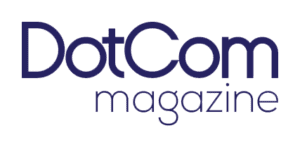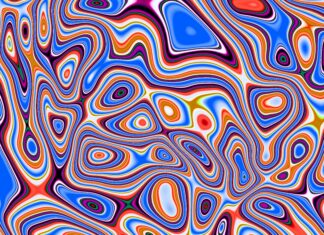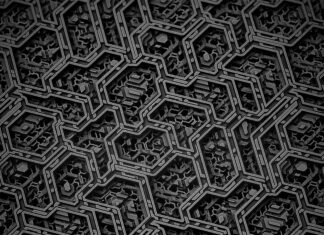In today’s evolving wellness landscape, knowing how AI will change the fitness nutrition guidance is essential for fitness professionals, health-conscious individuals, and tech innovators alike. From real-time dietary tracking to AI-generated meal plans, how AI will change the fitness nutrition guidance will fundamentally redefine how people eat, train, and optimize their health. If you want to keep up with peak performance and personalized nutrition, it’s time to understand exactly how AI will change the fitness nutrition guidance and what it means for your body, your goals, and your well-being.
Here are the top ten transformative ways AI is revolutionizing the intersection of fitness and nutrition.
1. Hyper-Personalized Meal Planning Based on Fitness Goals
One-size-fits-all nutrition advice is quickly becoming outdated. With the help of artificial intelligence, users can now receive meal plans that are dynamically generated to align with their unique fitness objectives, body type, metabolic rate, and even genetic predispositions.
AI analyzes vast datasets—such as workout intensity, sleep cycles, caloric needs, macro balance, and dietary restrictions—to deliver hyper-personalized meal suggestions. Whether someone is cutting for a bodybuilding competition, training for a triathlon, or managing PCOS through diet, AI can adjust their nutrition strategy accordingly.
Unlike traditional apps that rely on static input, AI evolves as the user progresses. For example, if weight loss stalls, the AI might recommend changes in carb timing or suggest micronutrient-rich meals to improve hormonal balance.
2. Real-Time Nutritional Feedback Using Image Recognition
Thanks to image recognition powered by AI, users can now simply snap a photo of their meal, and the system can instantly estimate calories, macros, ingredients, and even identify unhealthy patterns.
This technology eliminates tedious manual logging and improves accuracy. For example, the AI can differentiate between grilled and fried chicken, track portion sizes, and suggest healthier substitutes on the spot.
Over time, these insights help people make smarter decisions in restaurants, at home, and even during grocery shopping. The real-time aspect keeps users accountable and educates them on-the-go, reinforcing healthy habits.
3. Continuous Integration with Fitness Trackers and Biosensors
Fitness nutrition is no longer separate from physical activity tracking. AI now integrates data from wearables like Fitbit, Apple Watch, and Whoop bands to provide context-rich dietary guidance.
If your wearable shows that you burned 750 calories in a HIIT workout, the AI will adjust your post-workout meal to optimize recovery with the right combination of protein, carbohydrates, and electrolytes. If sleep data shows poor rest, it may reduce caffeine recommendations or suggest foods to boost melatonin production.
This real-time synchronization of exercise and nutrition provides a holistic picture, helping users fuel performance, enhance recovery, and balance lifestyle variables that impact their results.
4. AI-Generated Grocery Lists and Voice-Activated Assistance
AI-driven nutrition platforms can automatically generate smart grocery lists based on your current meal plan, pantry inventory, budget, and even your local grocery store’s inventory.
What makes this revolutionary is the level of integration—users can talk to their AI assistant (like Alexa or Siri) and say, “What do I need to buy for this week’s high-protein plan?” and receive a ready-to-shop list.
Some apps even allow for automated ordering and delivery integration, making health-focused grocery shopping efficient and frictionless. This saves time and increases adherence to nutrition protocols by removing barriers to preparation.
5. Adaptive Learning for Changing Body Composition
As your body changes through diet and exercise, your nutrition needs change too. Traditional meal plans can’t keep up—but AI can.
Using body scan data, weight fluctuations, and visual progress recognition through photos, AI systems adjust your nutritional intake dynamically. This includes modifying macronutrient splits, meal timing, and portion sizes.
For instance, if a user’s lean muscle mass increases over a 6-week training cycle, the AI may recommend a boost in complex carbs or specific amino acids to support continued gains. It’s a self-correcting, smart approach that responds to biological feedback loops.
6. AI-Supported Dietary Restrictions and Allergen Management
AI tools are especially helpful for users with dietary restrictions due to allergies, intolerances, or ethical preferences like veganism.
The system cross-references ingredients with a user’s health profile and flags potential allergens or non-compliant foods. It can suggest safe substitutes and ensure nutritional completeness even in restrictive diets.
This is particularly vital for athletes or active individuals with food sensitivities, who often struggle to meet their energy and protein needs. AI fills the knowledge gap and enables precise, safe guidance.
7. Predictive Nutritional Guidance Based on Activity Forecasting
Rather than waiting for input, AI can now forecast your future activity patterns based on your schedule, historical behavior, and even calendar events—and then proactively recommend dietary strategies.
If your app knows you have a marathon in two weeks, it may begin recommending carb-loading strategies a few days in advance. If it sees a pattern of late-night workouts, it could adjust your dinner timing to maximize recovery and sleep quality.
This predictive power empowers users to eat before they need to, optimizing performance and health in a way that reactive strategies cannot match.
8. Emotional Eating and Behavioral Pattern Analysis
Many people struggle with emotional eating, bingeing, or lack of appetite due to stress. AI can now detect emotional cues from app usage patterns, voice tone in spoken input, or even written language.
For example, a user frequently logging “cheat meals” late at night might trigger the AI to ask supportive questions or recommend mindfulness practices. Over time, the system learns how to intervene in a compassionate, personalized way—encouraging better habits and offering non-judgmental support.
This behavioral intelligence makes AI a mental health companion as well as a physical health coach—addressing the root of nutritional inconsistencies.
9. Social, Cultural, and Lifestyle Contextualization
Not everyone has the same dietary background. AI platforms are now being developed to account for cultural dietary preferences, religious restrictions, family traditions, and socio-economic factors.
For example, it can tailor Indian vegetarian high-protein meal plans or generate Ramadan-friendly meal structures. It can also provide budget-conscious guidance for users in food deserts or low-income areas, ensuring optimal nutrition within constraints.
This culturally aware approach makes AI nutrition tools more inclusive and relevant for a broader user base—addressing the global diversity in dietary needs and accessibility.
10. AI and the Future of Coaching and Community Support
While AI won’t replace human nutritionists or fitness coaches entirely, it will amplify their reach and precision. Coaches can now use AI-generated reports to guide conversations, track client adherence, and spend more time on strategy rather than data collection.
Community support platforms are also enhanced with AI moderation and matchmaking. Users can be grouped with similar goals or challenges, and the AI can nudge the group toward healthier behavior collectively.
In the future, AI may also host interactive, avatar-based nutrition coaches that provide live feedback, video consultations, or even simulate shopping experiences in virtual reality—all tailored to the user’s fitness level, nutritional needs, and lifestyle.
Conclusion
As we’ve explored throughout this article, understanding how AI will change the fitness nutrition guidance is no longer a speculative topic—it’s an ongoing revolution that is already shaping health and wellness for millions. Whether it’s customizing meals for elite athletes or guiding beginners through the maze of dietary decisions, how AI will change the fitness nutrition guidance is all about precision, personalization, and proactivity.
From real-time feedback, voice control, and behavior tracking to cultural sensitivity, smart grocery lists, and biometric integration, how AI will change the fitness nutrition guidance promises to make dietary success easier, smarter, and more achievable than ever.
As consumers demand better results and coaches seek more efficient tools, the fusion of artificial intelligence with fitness nutrition marks a major leap forward in human potential—both physically and mentally.





























